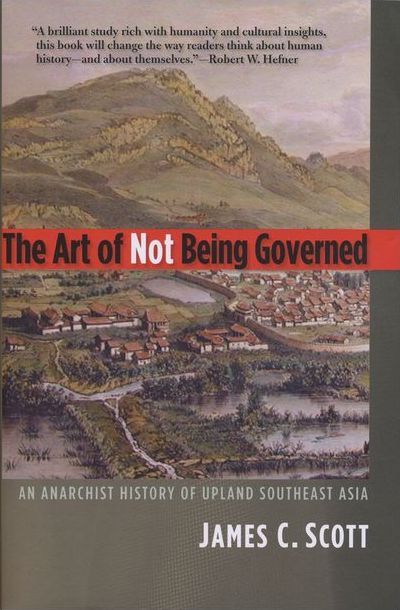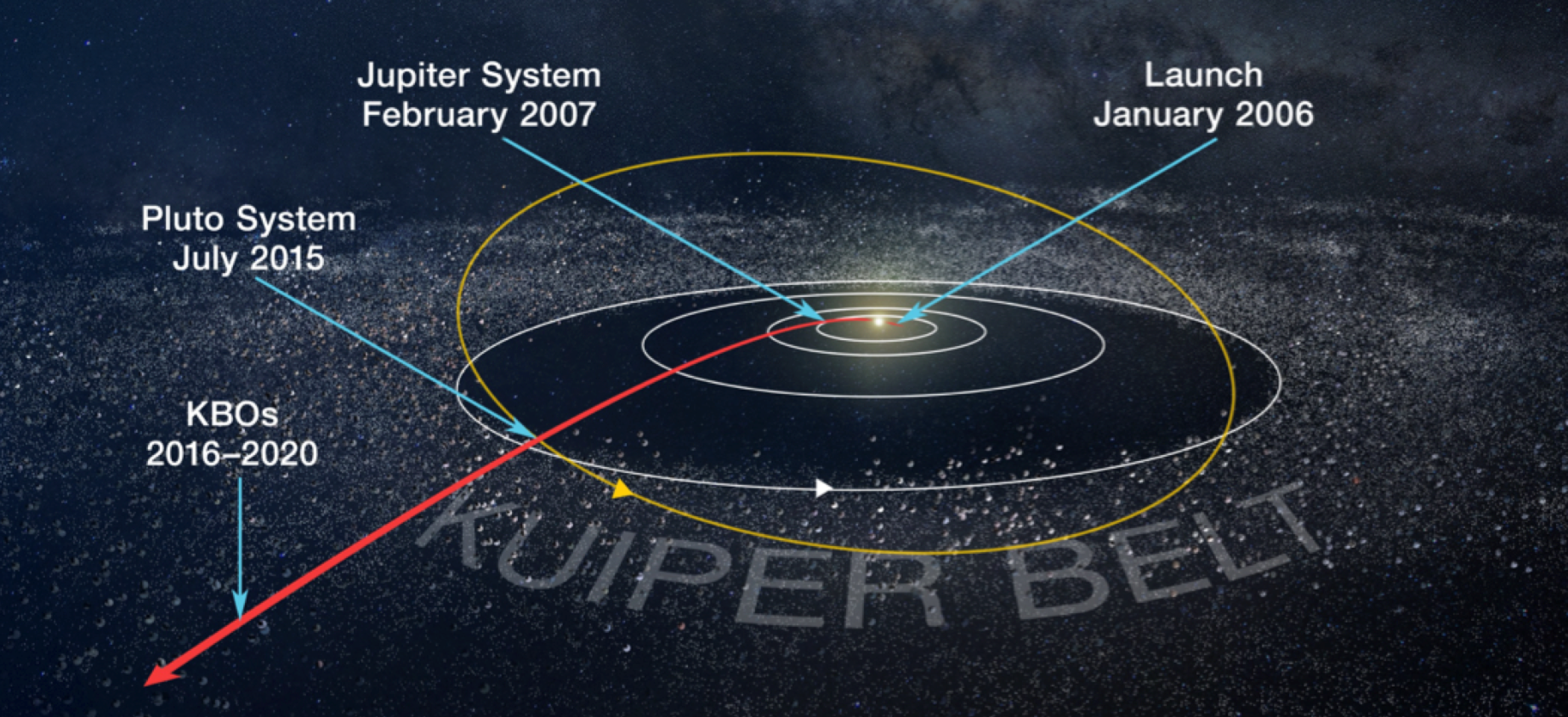The Kuiper Belt and The Art of Not Being Governed
I recently started reading The Art of Not Being Governed: An Anarchist History of Upland Southeast Asia, by James C. Scott. The basic thesis of the book is that, rather than being unrefined barbarians or “our living ancestors,” the people of marginal regions like Upland Southeast Asia (or the cossacks and Romani in Europe, Berbers in North Africa, maroons in the Americas, etc.) actively shape their lives in such a way as to avoid absorption into a nearby state. They are, in other words, “barbarians by design.”

The first few chapters, however, are dedicated to the internal logic of statecraft in preindustrial Southeast Asia. Consider the following passages from the beginning of chapter 3:
“The concentration of manpower was the key to political power in premodern Southeast Asia. It was the first principle of statecraft and the mantra of virtually every history of precolonial kingdoms in the region. Creating such space was easiest where there was a substantial expanse of flat, fertile land, watered by perennial streams and rivers, and, better yet, not far from a navigable waterway. Tracing the far-reaching logic of state spaces will help distinguish the fundamental differences between manpower-poor, land-rich political systems on the one hand and land-poor, manpower-rich systems on the other.”
“The need to concentrate population and, at the same time, the difficulty of doing so was inscribed in the demographic given that Southeast Asia’s land mass was only one-seventh as populated as was that of China in 1600. As a consequence, in Southeast Asia control over people conferred control over land, while in China control over land increasingly conferred control over people. The abundance of arable land in Southeast Asia favored shifting cultivation, a pattern of farming that often yielded higher returns for less labor and produced a substantial surplus for the families practicing it. What constituted an advantage for the cultivators, however, was profoundly prejudicial to the ambitions of would-be state-makers. Shifting cultivation requires far more land than irrigated rice and therefore disperses population; where it prevails, it appears to ‘impose an upper limit of population density of about 20-30 per square kilometer.’ Once again, concentration is the key. It matters little how wealthy a kingdom is if its potential surplus of manpower and grain is dispersed across a landscape that makes its collection difficult and costly. ‘Effective strength often came down to a polity’s core, not the realm’s total size or wealth,’ as Richard O’Connor has put it. “Irrigated wet-rice created stronger heartlands… It not only supported a denser population, but grain-supported villages would have been easier to mobilize.’ The very name of the northern Thai kingdom — Lanna, ‘one million padi fields’ — amply reflects this fiscal and manpower obsession.”
So, that’s a lot, but it got me thinking about the logic of statecraft in the Solar System.

(Wikipedia) A chart of the relative distances between planets in our Solar System. The sizes of the Sun and planets are not scaled to their distances.
Space is big. This is sort of obvious, but it’s worth repeating. Space is big. The circumference around Earth at its equator is 40,075.017 kilometers. That’s a long way — literally all the way around the planet — but you’d have to go more than nine and a half times that distance to get to the Moon. Thirty Earth-sized planets could fit in between.
Seems like a long way, right?
You’d have to travel almost 3,733 times around the Earth to equal one astronomical unit, roughly the distance from here to the Sun. You could line up more than 11,000 Earth-sized planets in that area.
It gets bigger from there. The average distance from the Sun to Mars is a bit over 1.5 AU, or one-and-a-half times the distance from the Sun to Earth. For Jupiter it’s 5.2 AU, for Saturn it’s 9.6 AU, for Uranus it’s 19.2 AU, and for Neptune it’s 30.1 AU. I could recite numbers at you all day, but I hope you get the point. The Solar System is so incomprehensibly vast that light itself takes hours to reach its farthest reaches.
What does that mean for a state centered around planet Earth, especially one interested in extracting material wealth from the rest of the system?
For the Restitution Project and its corporate allies, the mission of restoring Earth’s biosphere depends on maintaining the flow of commerce. For that, they need people and machinery in locations around the Solar System where material wealth can be found. Artificial intelligence can lower the minimum human population necessary to support a colony, but not fully.
Therefore, it’s essential to concentrate human settlement in places optimal for resource extraction and industrial manufacturing. There, the supply chain can be accurately monitored and taxed, and manpower can be effectively counted and mobilized. This is what Scott terms “state-accessible product” — not the entire wealth of a country, but only that which can be identified, monitored, and accessed by the state.
“It profits the ruler not at all if his nominal subjects flourish, say, by foraging, hunting, or shifting agriculture at too great a distance from the court. It similarly profits the ruler little if his subjects grow a diverse suite of crops of different maturation or crops that spoil quickly and are therefore hard to assess, collect, and store. Given a choice between patterns of subsistence that are relatively unfavorable to the cultivator but which yield a greater return in manpower or grain to the state and those patterns that benefit the cultivator but deprive the state, the ruler will choose the former every time. The ruler, then, maximizes the state-accessible product, if necessary, at the expense of the overall wealth of the realm and its subjects.”
For the Restitution Project, state-accessible product is maximized when large populations live in central city-stations located at optimal points along the interplanetary supply chain. But for those who actually live in those city-stations, life can be hard. They are the people most subject to Restitutionary laws and corporate regulations. They are the people drawn up for service in the External Navy, and subject to punishment if they fail to meet their obligations. If soldiers, settlers, or workers are needed, then both state and company reach for the pool of people most easily accessible.
According to Scott, in a precolonial Southeast Asian padi-state, this power dynamic leads to a sort of systemic vulnerability: the state presses hardest on its core population, which flees or rebels if the burden is too great. The core population shrinks, and the state must press even harder on those who remain to extract the same wealth and manpower. This accelerates the population decline, and the state contracts in power until it either recovers or collapses.
Here, the Restitution Project is different. Unlike the padi-state, the Restitution Project has Earth: the home of over 99% of the human population, and a near-infinite supply of state-accessible wealth and manpower. But in the 24th century, Earth is not enough. What the mother planet needs for the health of its biosphere, it can only find elsewhere in the Solar System.
In this way, the Restitution Project also operates like a colonial empire: badly-needed resources flow from the frontier to the metropole, where the state’s core population uses the wealth for its own purposes. And this population is reluctant to move out to some rock millions of kilometers from home. That’s not to say that none do — job opportunities in the External Service are lucrative, and there wouldn’t be Spacers in the first place if at least some Earthers didn’t relocate offworld for one reason or another. But the population of outer space is limited for a reason.
Beyond the bounds of Earth’s hill sphere, the Restitutionary political system is very much manpower-poor and land-rich. Therefore, the External Service uses control over people to gain control over asteroids, moons, and planets. The particulars are hugely different between a premodern padi-state and a planetary industrial empire, but the political dynamics are similar in key ways.
So if you’re a Spacer interested in fleeing the burdens of hard labor in service of planetary reconstruction and corporate profit, where can you go?

(NASA/Johns Hopkins University Applied Physics Laboratory) A diagram of the New Horizons spacecraft’s journey through the Outer Solar System, with the orbits of Jupiter, Saturn, Uranus, Neptune, and Pluto shown, as well as the Kuiper Belt. Seriously, I can’t express how big the Solar System is.
The furthest outposts of the External Service are in orbit around Uranus and Neptune — atmospheric gas refineries generating helium-3 fuel for fusion-powered spaceships. Beyond Neptune, some 30-50 AU from the Sun, there are hundreds of millions of objects, asteroids and comets and dwarf planets. This incomprehensibly vast region of space is known as the Kuiper Belt.
The Kuiper Belt has little economic value for the Restitution Project. Those small objects are composed primarily of icy volatiles rather than rock or metal — useful for sure, but it’s nothing that can’t be found closer to the Sun. Furthermore, it’s all dispersed in small bodies at enormous distances, hard to concentrate into a central supply chain. And with such little sunlight, energy production at scale would be a huge problem.
All of that makes the Kuiper Belt unsuitable for mass settlement and industrial manufacturing, but it does make it ideal as a zone of refuge away from the External Service. Small communities can build a parabolic dish to capture sunlight and concentrate it on a town-sized settlement. Other communities might opt for fusion- or fission-powered habitats, depending on what they can mine or steal. All those icy volatiles like water, ammonia, and methane can be used to create climate-controlled biospheres for agriculture.
You might find your next-door neighbor only a few days or weeks away. That sounds like a lot, but it’s not bad given that it might take a month or more to head back toward the Sun. That journey may be worth it, though — all those concentrated centers of production and population make juicy targets for pillage. Cargo ships can be intercepted and robbed, settlements can be forced to provide tribute at gunpoint, and entire stations of people can be uprooted and carried back to the Kuiper Belt.
Indeed, this rampant piracy is the primary raison d’être for the External Navy. There are no state competitors to the External Service, so the only threat comes from raiders. Of course, this intermittent conflict creates even more pressure on the urban population of the Solar System, as the External Service must levy higher taxes and draw up more soldiers to defend its supply chain.
There’s lots more I can say about the actual lifeways of those who live in the Kuiper Belt, but I’ll leave it here for now. For this post, I wanted to draw out the comparison between the Kuiper Belt and highland Southeast Asia as described in The Art of Not Being Governed. They’re both marginal regions from the perspective of state authorities, home to less “developed” populations who have yet to come to “civilization.” They’re also regions of refuge for those fleeing the burdens of life under state domination, pockets of freedom made possible through a geography hostile to the ambitions of state-builders.
I really strongly recommend The Art of Not Being Governed. I’ve stuck sticky notes all through my copy to keep track of everything I’ve learned. It’s a great and informative work that’ll teach you a lot about power, statecraft, and the makeup of the premodern world.